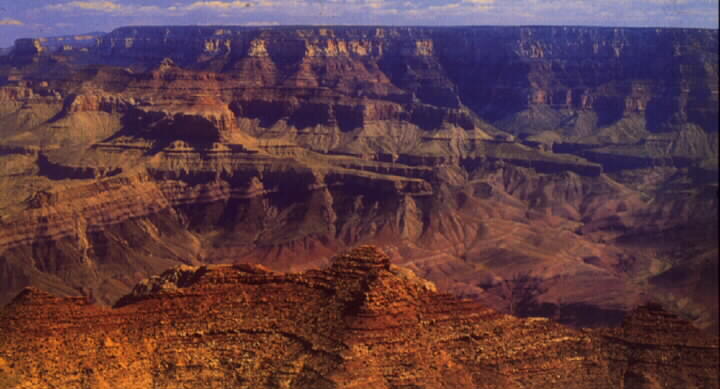Geological Periods as Seen in Sedimentary Rock
We see rocks as old as 4 b.y.o., but not before (the memory of that first 500 million years is simply a blur to the Earth!). The most important is the sedimentary rock, because they tell us about the history of life over the age range they formed.
Sedimentary Rock
Rocks which form at or near the earth's surface at relatively low T and pressure, with
deposition by water, wind, ice; precipitation from solution (may be biological) and
or growth in position by organic processes (carbonates, limestone etc).
As these layers of sediments form, they incorporate in them any organisms that were present at that time, creatures that died or where swept up. The organisms found in a given layer are consistent from one region on Earth to the next. Fossils found in differing layers also record changes in species that existed on Earth at those times.
 The Grand Canyon
The Grand Canyon
The rocks making up the Grand Canyon were deposited over 2 b.y.a., rocks at top are
recent, rocks near the bottom, the oldest. It is by looking at regions like this,
where billions of years of time is revealed, that clear evidence of the evolution
of species over time is proven.
Geological Periods
For the most part, Geological Periods are defined based on the characteristics and
the species existing at the time. For example:
- Cenozoic Era: The Era of Mammals (Our time!).
Mesozoic Era: The Era of Dinosaurs (large reptiles).
How geologists attach AGES to these eras is quite another thing!